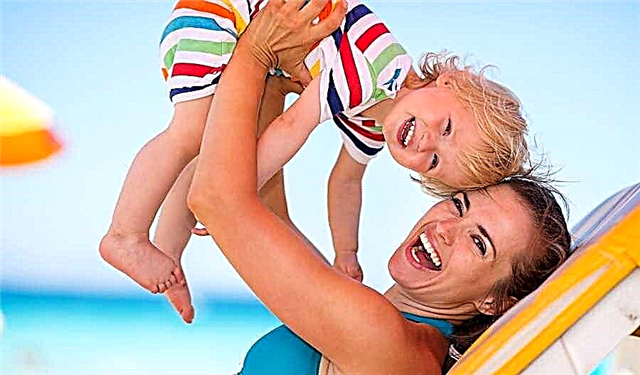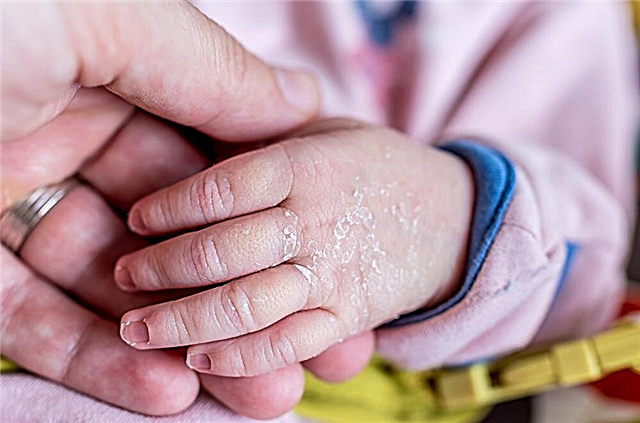Why does laryngospasm occur in children?
Anatomical and physiological features of the structure of the larynx in babies
Laryngospasm develops more often in children than in adults due to the anatomical features of the larynx and vocal (vocal) cords.
The features of the larynx in children are as follows.
- The organ has a small size and a thin lumen, as well as strong morphofunctional fragility, weak resistance to disease-causing effects, etc.
- In young children, the larynx is located high, because of this, the interval between the oral cavity and the glottis is reduced, which increases the likelihood of aspiration of foreign bodies and the spread of inflammation to the larynx from the nose, nasopharynx and oral cavity.
- In a child, the development of diseases of the larynx is associated with the imperfection of its protective function due to underdeveloped reflexogenic areas.
- Sometimes muscle spasm occurs due to high neuro-reflex excitability due to poor stability of the nervous system.

Background (predisposing) conditions
Numerous studies have established the basic conditions of the body that can provoke compression of the laryngeal muscles in a child:
- strong excitability of the reflex neuromuscular apparatus of the larynx;
- metabolic disorders;
- lack of vitamin D and calcium;
- defects of the respiratory system;
- birth injury;
- allergy;
- epilepsy;
- inflammatory throat diseases: laryngitis, tonsillitis, pharyngitis.
The main causes of seizures in children
Spasmophilia
This is a predisposition to the appearance of seizures, muscle twitching and spasm. As a rule, it is caused by a lack of vitamin D and calcium.
Main reasons:
- removal of the parathyroid glands;
- malignant neoplasms;
- diseases of an infectious genesis;
- nervous irritability;
- hemorrhage.
Allergic reaction

With the penetration of an allergen or irritant into the body, non-infectious inflammation of the larynx with spasm of its walls may develop.
The main provoking factors are as follows:
- animal hair;
- cosmetics;
- household chemicals;
- pollen of plants, fluff;
- red fruits;
- chocolate;
- honey;
- milk products;
- some medications;
- industrial waste.
Reaction to anesthesia
A spasm of the laryngeal muscles can occur at the onset of anesthesia when cold ether vapor is inhaled. In such a situation, it is assumed that laryngospasm occurs due to a high concentration of ether, irritation of the larynx with mucus, an endotracheal tube or food masses. Most often, spasm occurs with the introduction of barbiturates.
The surgeon's manipulations in reflexogenic zones (solar plexus, when pulling on the mesentery or stomach) can also lead to reflex laryngospasm.
Extubation
This is the removal of the endotracheal tube after anesthesia, which is performed provided that the patient breathes normally on his own, that is, when consciousness and reflexes are restored. Laryngospasm is a complication of this procedure.
Laryngitis
This is an acute disease in which patency in the larynx is impaired, and as a result, respiratory failure may develop. A spasm of the laryngeal muscles is one of the manifestations of this disease.
Laryngitis develops due to the following reasons:
- bacterial and viral infections;
- long stay in a dusty room;
- hypothermia.
Reflex laryngeal spasm
In children, reflex laryngospasm can occur against the background of the following conditions:
- artificial feeding;
- rickets;
- dropsy of the brain.
The main reason is the increased neuromuscular excitability of the larynx. As a rule, a spasm is triggered by a psychogenic disorder and occurs with severe stress.
Epileptic seizure
During an attack, all muscles contract, including the laryngeal muscles. Spasm most often occurs when the focus of epileptic activity is located in the temporal lobe of the brain.
Laryngospasm symptoms
How to understand that this is an attack?
Classical stages of laryngeal spasm:
- breathing becomes noisy and difficult;
- the voice becomes hoarse, there is no way to cough;
- cyanosis (cyanosis) appears on the nasolabial triangle;
- the child opens his mouth wide and, trying to breathe normally, throws his head back;
- sweating increases, large drops of sweat appear on the forehead;
- pulse weakens;
- the rapid increase in the level of carbon dioxide in the blood irritates the respiratory center;
- the child inhales deeply and choking;
- respiratory capacity is stabilized;
- the skin acquires a normal shade;
- the spasm goes away.
In severe cases, the child cannot breathe deeply. Whole-body cramps appear due to the patient's attempt to stabilize breathing. There may be involuntary emptying of the bladder, foam from the mouth, loss of consciousness.

Conditions with which to differentiate
The complex of manifestations of spasm of the larynx can be mistaken for symptoms of other disorders with airway obstruction. For the final diagnosis, differential diagnosis is carried out with:
- Quincke's edema;
- false croup;
- laryngeal stenosis;
- laryngotracheobronchitis;
- bronchial asthma;
- swelling of the larynx.
The results of differentiation are correlated with diagnostic measures.
Laryngospasm and bronchospasm
The main difference between the two states is as follows:
- with laryngospasm, there are difficulties in inhalation, and exhalation is carried out relatively freely;
- with bronchospasm, exhalation is difficult, and inhalation is normal.
Emergency treatment is required in both cases, as the conditions can lead to dangerous complications.
Bronchial asthma and laryngeal spasm
Bronchial asthma is a chronic non-infectious inflammatory injury to the airways. In this condition, instant bronchial obstruction occurs, as a result, the oxygen flow is limited and asphyxia occurs.
One of the differences from laryngospasm is that the patient feels the approach of bronchospasm.

Emergency care for laryngospasm in children
For any signs of respiratory distress in a child, an ambulance should be called immediately.
How can you help a child before the ambulance arrives?
Before the arrival of the ambulance, the following steps must be taken to assist the child with laryngospasm:
- remove any embarrassing clothing;
- try to calm the child as much as possible;
- provide the child with access to fresh air (open a window or window in the room, if possible, take the child out into the street);
- for reflex stimulation of breathing, perform actions of an irritating nature (tapping, pinching on the back);
- wet the face of the child with cold water;
- if there are cramps, place a soft object under the child's head and place it on a hard surface.
Medical relief of an attack
Ambulance doctors can treat laryngeal spasm using the following methods:
- inhalation with adrenaline;
- chloral hydrate enema;
- the introduction of potassium bromide;
- the use of antihistamines for the allergic nature of the spasm;
- the use of dexamethasone if laryngospasm has occurred due to asthma.
Any medication for laryngospasm is carried out only by a doctor. It is unacceptable to independently stop an attack with the help of pharmacological agents.
When is surgery required?
When conservative therapy could not stop the attack, then the intervention of surgeons is required.
- Tracheal intubation is a medical procedure that involves inserting a tube into the trachea that carries oxygen to the lungs.
- A tracheotomy is a surgical procedure in which an incision is made in the front of the patient's neck and a breathing tube is inserted through an opening into the trachea to allow air to flow.
Physiotherapy
Physiotherapy is not prescribed as an independent method of treating laryngospasm. Physiotherapy procedures are carried out for prophylaxis and include: hardening, breathing exercises, ultraviolet irradiation, inhalation with a nebulizer.

Traditional medicine for laryngospasm
Traditional medicine can be used as an auxiliary preventive treatment for laryngospasm. They should be used only after consulting a doctor, and if there is no allergy to plant elements.
Warm milk with the addition of cinnamon, honey, nutmeg has immunostimulating properties and has a softening effect on the respiratory tract.
For the prevention of laryngospasm, chamomile has proven itself, which has an anti-inflammatory effect, strengthens the immune and nervous systems.
The fruits of the black mountain ash are very useful for the respiratory system, their use contributes to the excretion of phlegm, to alleviate the condition in respiratory diseases.
Do not use traditional medicine in the active phase of laryngeal spasm.
Tactics after stopping the attack.
After the normalization of breathing, the child should be provided with a quiet pastime. It is also recommended to let soda vapor breathe through the nebulizer:
- Dissolve a teaspoon of soda in 1.5 tbsp. water;
- the temperature of the solution should not exceed 40 0 С;
- perform the procedure twice a day.
When a nebulizer is not available, a warm bath with soda is suitable. When the child's condition has stabilized, give him a copious warm alkaline drink (warm milk).
Dangerous complications of laryngospasm
In severe cases, laryngospasm in a child leads to severe muscle cramps, respiratory and heart failure, and loss of consciousness. A long spasm can cause coma and death.
Seizure Prevention Tips
The risk of laryngeal spasm in children cannot be completely eliminated. But adherence to preventive measures will help protect the child from suffocation.
Medications
In order to avoid recurrence of spasm, it is necessary in case of any respiratory diseases to provide the child with conditions for normal breathing in time. Babies from 3 years old can do inhalation with Ventolin. For infants and children under 3 years of age, an enema with 2% chloral hydrate solution is recommended. In severe conditions of the child, a specialist can prescribe inhalations with Berodual. It will quickly and effectively relieve spasms in the larynx.

Diet
A child's diet should be dominated by milk products and plant foods enriched with vitamins. When feeding babies, it is necessary to completely abandon artificial mixtures and switch to natural feeding.
Mode
To minimize the risk of a seizure, it is recommended to make adjustments to the child's lifestyle. Hardening is shown, providing sufficient time for sleep and rest, avoiding physical overwork and stress.
It is required to carry out regular medical monitoring of the child's well-being.
Conclusion
Identifying risk factors and taking the necessary precautions are key to preventing laryngospasm.



